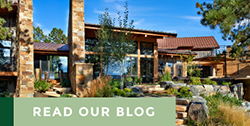What’s hiding behind the walls at the new Denver Union Station? Only Ascent can tell you…
Did you know that the first train arrived in Denver’s Central Platte Valley on June 21, 1870? At the time, there was just one station for the Denver Pacific, but as additional railroads came into the city, each built its own depot. The Union Depot and Railroad Company opened the city’s first Union Station on June 1, 1881. It has since experienced many highs and lows – there have been visits from dignitaries like Harry Truman and Theodore Roosevelt – and fires and floods. At its peak in the 1920s and 30s, the station operated 80 trains a day, but traffic slowed over the next 30 years.
The current redevelopment of Denver Union Station (DUS) is setting the stage for another high point in the station’s history. This exciting project will bring together many different transportation modes, along with new private development, to create a bustling urban center and multimodal transportation hub in downtown Denver.
As you can imagine, times have changed since the station’s early days and so have the infrastructure requirements. The new station will have to accommodate three types of rail service (light rail, commuter rail, and Amtrak), as well as regional, express, and local bus service, taxis, shuttles, vans, bicycles and pedestrians. The endeavor to meet so many needs within a single hub is truly awe-inspiring.
It takes a village to complete a project like DUS, and we’re proud to be a part of the team working on something so important to our community. To date, Ascent has been instrumental in helping shape, fit and support ceiling, wall and MEP (Mechanical/Electrical/Plumbing) elements within the main structure of the station. We are part of a greater team that includes many highly regarded partners, including Kiewit, one of North America’s largest and most respected construction organizations; AECOM, a global provider of professional technical, management support and engineering services; and Skidmore, Owings & Merrill LLP (SOM), one of the leading architecture, urban planning, interior design, and engineering firms in the world.
 The infrastructure we’ve been focused on delivering not only supports the station’s ceiling, walls and MEP, it also houses the vast amount of wiring and cabling required to support a state-of-the-art transportation hub. Because today’s mobile devices have led many of us to feel that we live in a ‘wireless world’, my guess is that you might be surprised to realize ‘what’s hiding behind the walls’ of the new station. Key elements of the DUS’ communication system will include: CCTV, IP-based networking, low voltage copper cabling, fiber-optic cabling, public address, visual message signs, supervisory control and data acquisition and emergency telephones. Many of these elements require wiring and cabling that we are helping to safely support and hide away.
The infrastructure we’ve been focused on delivering not only supports the station’s ceiling, walls and MEP, it also houses the vast amount of wiring and cabling required to support a state-of-the-art transportation hub. Because today’s mobile devices have led many of us to feel that we live in a ‘wireless world’, my guess is that you might be surprised to realize ‘what’s hiding behind the walls’ of the new station. Key elements of the DUS’ communication system will include: CCTV, IP-based networking, low voltage copper cabling, fiber-optic cabling, public address, visual message signs, supervisory control and data acquisition and emergency telephones. Many of these elements require wiring and cabling that we are helping to safely support and hide away.
It might seem like one of the less glamorous aspects of this stunning new station, but when you eventually get the chance to experience the sights and sounds of DUS, we hope you’ll think of Ascent and the many other members of the team that have done work behind the scenes to create the centerpiece of a new age of connectivity in our region.



